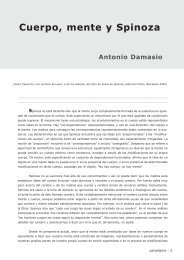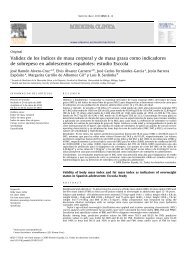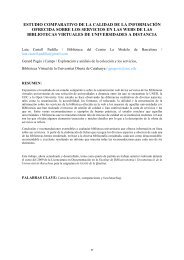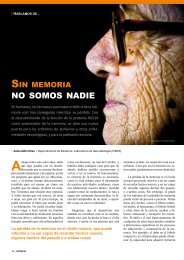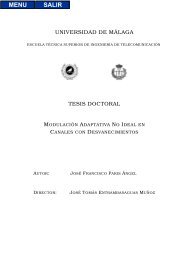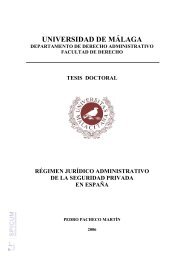Papel de las actividades superóxido dismutasa y catalasa en la ...
Papel de las actividades superóxido dismutasa y catalasa en la ...
Papel de las actividades superóxido dismutasa y catalasa en la ...
You also want an ePaper? Increase the reach of your titles
YUMPU automatically turns print PDFs into web optimized ePapers that Google loves.
INTRODUCTION<br />
subsp. piscicida, is the disease responsible for higher mortalities (Zorril<strong>la</strong> et al., 1999),<br />
becoming the main limiting factor for sole production.<br />
2. Photobacterium damse<strong>la</strong>e subsp. piscicida<br />
Photobacterium damse<strong>la</strong>e subsp. piscicida, an obligate halophilic bacterium, is the<br />
causal ag<strong>en</strong>t of psedotuberculosis (Kubota et al., 1970), because in chronic cases,<br />
affected fish show promin<strong>en</strong>t white tubercles in several internal organs. This disease<br />
was first <strong>de</strong>scribed in wild popu<strong>la</strong>tions of white perch (Morone americanus) and<br />
stripped bass (Morone saxatilis) in the United States (Snieszko et al., 1964). Curr<strong>en</strong>tly<br />
natural hosts of the pathog<strong>en</strong> inclu<strong>de</strong> a wi<strong>de</strong> variety of marine fish. This disease has<br />
great economic impact in Japan, where affects mainly yellowtail (Serio<strong>la</strong><br />
quinqueradiata) cultures (Kusuda and Sa<strong>la</strong>ti, 1993), in the United States and in the<br />
European Mediterranean area, causing important losses in gilthead seabream (Sparus<br />
aurata, L.) (Ceshia et al., 1991; Toranzo et al., 1991), stripped seabass (Hauwke et al.,<br />
1987), seabass (Dic<strong>en</strong>trarchus <strong>la</strong>brax, L.) (Baudin-Laur<strong>en</strong>cin et al., 1991; Balebona et<br />
al., 1992) and, rec<strong>en</strong>tly, in sole (Solea s<strong>en</strong>egal<strong>en</strong>sis, Kaup) (Zorril<strong>la</strong> et al., 1999;<br />
Magariños et al., 2003; Arijo et al., 2005).<br />
External pathological signs of the pseudotuberculosis are usually inconspicuous,<br />
surface lesions being usually abs<strong>en</strong>t in affected fish. Occasionally, diseased gilthead<br />
seabream and seabass disp<strong>la</strong>y abnormal skin pigm<strong>en</strong>tation or slight haemorrhagic areas<br />
in the head and gills and swelling of the abdominal cavity (Toranzo et al., 1991;<br />
Balebona et al. 1992; Fouz et al., 2000).<br />
Internally, diseased fish show haemorrhagic septicaemia and necrosis in the<br />
majority of the organs, disp<strong>la</strong>ying the typical tubercles consisting in accumu<strong>la</strong>tion of<br />
bacteria, necrotic phagocytes and granulomes. Moreover the necrosis and the exist<strong>en</strong>ce<br />
of granulomata in sple<strong>en</strong>, kidney and liver, where bacteria are visible in the sinusoids<br />
and within the hepatic vessels, have be<strong>en</strong> reported (Kubota et al., 1970; Wolke, 1975;<br />
Tung et al., 1985; Hawke et al., 1987; Toranzo et al., 1991; Balebona et al., 1992; Noya et<br />
al., 1995a).<br />
72




